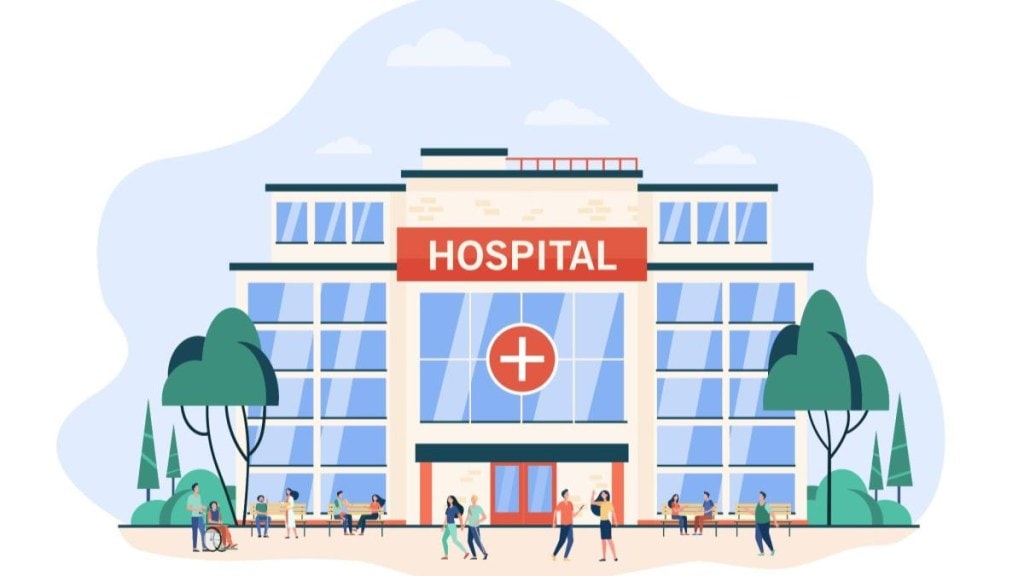By Randeep Guleria,
India stands at a critical juncture in its quest for universal healthcare coverage and the realisation of Viksit Bharat by 2047. Our healthcare sector boasts a competitive advantage, propelled by its large pool of well-trained medical professionals and affordability. However, challenges such as inadequate infrastructure, shortage of workers, disparities in healthcare accessibility, and the burden of non-communicable diseases persist. Urban areas have a majority of hospital beds and medical professionals, with a concentration of 66% of hospital beds despite accounting for a mere 28% of the population. In contrast, rural areas, home to 72% of the population, have access to just one-third of hospital beds. Moreover, 67% of doctors in India practise in urban areas.
To enhance the quality of healthcare delivery, a multifaceted approach is required. We need stronger infrastructure outside of our main cities, especially in Tier-II and III townships. Second, with technology transforming healthcare access and patient outcomes, we need to harness it to modernise medical curriculum so that we are able to provide better treatment solutions, improve access, and meet patient expectations. Skilling and training healthcare professionals is paramount in this digital era. Telemedicine initiatives in the last three years, such as the national teleconsultation service, eSanjeevani, have opened new vistas in health services. Private hospitals as well as public units providing tertiary care have invested in digital infrastructure and allocated resources and personnel to modernise hospital information systems, hospital management information system, and electronic medical records to manage patient data and draw insights. Patients too are using smartphones and internet to not just store diagnostic reports and prescriptions but also to make appointments, consult, use home-based diagnostics and testing facilities, and order medicines.
In the same way, tele-mentoring is emerging as a promising trend in bridging gaps in underserved areas by using technology to remotely mentor workers and screen patients. The changing landscape necessitates making workers tech-savvy and training to better manage advanced equipment and health-tech platforms and systems. India has all the essential ingredients for exponential growth in this sector — including a large population, 750 million-plus smartphone users, and internet penetration of 52.4% of the population.
A fundamental overhaul of the medical curriculum is a need of the hour to prepare doctors for the future. With the advent of advanced investigative medicine and a shifting focus towards non-communicable diseases, medical training must evolve to blend scientific rigour and artistic intuition. Patients no longer want to just recover from a disease condition but a better quality of life. They want shorter hospital stays, less pain, and better performing medical devices fitted in their bodies. Those suffering chronic diseases and on medication over a long period want to enjoy a normal lifestyle.
We need to prepare for futuristic care, with new models including out-of-hospital, remote, and home care poised to shape service delivery. As the burden of non-communicable diseases (NCDs) grows (causing over 60% of all deaths in India, as of 2021), necessitating long-term care, innovative approaches to training, and skilling of health professionals and caregivers become indispensable. Emphasis needs to be on prevention and professionals need to be trained in this regard. A mass strategy should be developed to align with the government’s programme on screening for early diagnosis of NCDs. Students of medicine must learn how modern technological tools can diagnose cancers, hypertension, and eye diseases through smartphones and devices powered by artificial intelligence.
Private sector engagement is pivotal in this endeavour, given its resources, technical strengths, and reach. And public-private partnership (PPP) has the potential to emerge as the linchpin in driving these transformative efforts, leveraging the strengths of both sectors to enhance healthcare accessibility and affordability. In 2021, India secured a $7.7 billion investment across 25 projects, marking the largest commitment in South Asia. While neighbouring countries experienced a decline in private participation in infrastructure (PPI) compared to the previous year, India notably saw a 49% increase in private investment commitments.
PPPs can unlock avenues for improving healthcare accessibility and affordability, through inclusive and sustainable approaches, as was witnessed during the Ebola Open Data Jam in Africa when hundreds of workers and volunteers gave their time to search and collate disparate sources of open information on Ebola to centralise the information to enhance the activities of governments, partners, and aid organisations. Covid-19 also saw public and private sectors working together on the vaccination drive for last-mile reach.
As India marches towards its goal of universal health coverage, the convergence of public and private sectors is indispensable. The private sector has a significant role in driving innovation, enhancing accessibility, skilling and training of medical professionals, harnessing technology to support smaller facilities and patients in underserved areas, and thereby improving the quality and reach of healthcare services. By fostering long-term partnerships grounded in shared objectives and mutual benefit, India can realise its vision of health for all by 2047.
Mahatma Gandhi envisioned a society where the welfare of all is paramount. Realising healthcare sarvodaya is a step towards fulfilling that vision.
The author is Chairman of Institute of Internal Medicine, Respiratory and Sleep Medicine and director, Medanta Medical School.
Disclaimer: Views expressed are personal and do not reflect the official position or policy of Financial Express Online. Reproducing this content without permission is prohibited.
